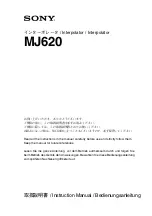
PULSERPLUS PRO™ HIGH RESISTANCE GROUNDING SYSTEM
INSTALLATION, OPERATION AND MAINTENANCE INSTRUCTIONS
4750 Olympic Blvd. • Erlanger, KY 41018 • USA
Phone: 800-537-6144 / 859-283-0778 • Fax: 859-283-2978
www.postglover.com
Serving the Electrical Industry Since 1892
PGR Document #HG111-06
© 2006 Post Glover Resistors, Inc.
PULSERPLUS PRO™ HIGH RESISTANCE GROUNDING SYSTEM
INSTALLATION, OPERATION AND MAINTENANCE INSTRUCTIONS
4750 Olympic Blvd. • Erlanger, KY 41018 • USA
Phone: 800-537-6144 / 859-283-0778 • Fax: 859-283-2978
www.postglover.com
Serving the Electrical Industry Since 1892
© 2006 Post Glover Resistors, Inc.
19
Section 8 – Maintenance
Normally, no maintenance is necessary for the PulserPlus Pro™ high resistance grounding system. However,
periodic inspections are needed to ensure that the controller is functioning correctly and the resistor is still capable
of protecting the system. Post Glover Resistors recommends that the periodic inspections coincide with your
normal system Preventative Maintenance schedule.
The following procedure is recommended for periodic field inspections:
1. De-energize the system being grounded and break the connection between the system, the neutral, and
the grounding resistor using the disconnect switch. Always use proper lock-out/tag-out procedures when
working on electrical equipment.
2. Open the front door on the control enclosure. For systems with a separately mounted resistor, remove
the front and rear covers. This will allow for a visual inspection of all internal components.
3. Carefully check for cracked insulators and resistor cores. A MEGGAR or Hi-Pot test is the most reliable
method of ensuring that the insulation is still providing the necessary electrical isolation.
4. Check the resistive element for continuity. Ohmmeter readings made between each neutral tap and
the ground side of the resistor should be within 10% of the values on the resistor drawing. If the
resistances of the elements are more than 15% different from the drawing values, the resistors should be
replaced. Any open resistors should be replaced.
5. Check all internal connections for tightness. Check wiring for signs of damage from heat or overloads.
6. Check the enclosure for signs of damage from weather or rodents. Remove any dirt or debris from the
inside of the enclosure using a vacuum cleaner. Replace all side covers removed during inspection and
check the mounting bolts for tightness. Close the front door of the control enclosure.
7. After re-energizing the system, perform the Test procedure in section 4.3 to verify system operation.
8.
FOR REPLACEMENT PARTS OR ASSISTANCE, CALL 1-800-537-6144.
Please have the resistor
nameplate information readily available when you call.






































